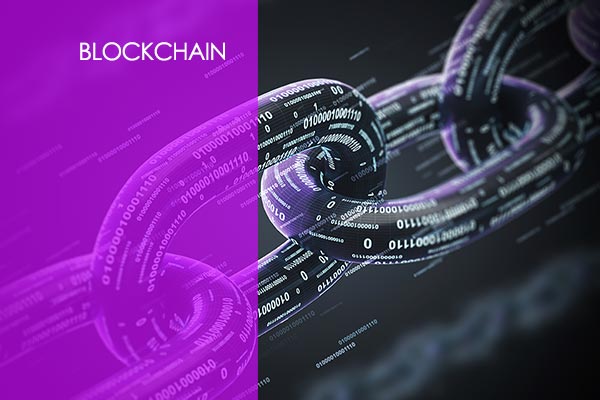What Is an Artificial Neural Network (ANN)?
Definition: Artificial Neural Network (ANN)An Artificial Neural Network (ANN) is a computational model inspired by the networks of biological neurons in the brain. It is a cornerstone technology in the

Blockchain technology has evolved beyond its origins in cryptocurrencies and is now a pivotal component of innovative solutions across diverse industries. Its unique characteristics, including transparency, security, and efficiency in managing data and transactions, have spurred a surge in blockchain app development. This guide explores the intricacies of blockchain application development, offering a comprehensive roadmap for businesses and developers eager to harness this transformative technology.
Key Points:
Blockchain app development is rapidly advancing, offering a multitude of opportunities for businesses to create robust, decentralized applications. It extends beyond creating digital currencies to developing applications that serve various purposes, including supply chain management, secure transactions, and identity verification.
Key Points:
Developing blockchain applications demands a profound understanding of the underlying technology. It is both an art and a science, requiring a creative approach to problem-solving within the technical constraints and capabilities of blockchain technology.
Key Points:
The initial step in creating a blockchain-based solution is understanding the problem you aim to solve. Whether it involves enhancing cross-border payments’ efficiency or ensuring product authenticity in a supply chain, the initial stages entail defining the scope and objectives of your blockchain solution.
Key Steps:
Real-world Example: In the realm of environmental conservation, blockchain can be used to track the origin and sustainability of products. Consumers can make informed choices by supporting brands committed to eco-friendly practices.

Seize the future with our Certified Blockchain Developer – Hyperledger (CBDH) course! Ideal for engineers and developers, this course is your ticket to Blockchain Training Alliance Certification. Master blockchain now and lead the tech revolution!
Developing blockchain applications involves a series of crucial steps: ideation, selecting the right blockchain platform, designing the architecture, and coding smart contracts. Blockchain mobile app development also necessitates a focus on user experience and integration with mobile device capabilities.
Key Steps:
Real-world Example: Picture a decentralized voting system built on blockchain technology, ensuring the integrity of elections and enabling secure, remote voting for citizens around the world.
The foundation of building a blockchain application lies in meticulously designing its architecture. This process entails selecting a suitable blockchain platform that can meet the application’s demands in terms of transaction speed, security, and scalability. For those contemplating how to build a blockchain application, understanding the network’s consensus mechanism and the smart contract functionality governing transaction rules is paramount.
Key Steps:
Real-world Example: Supply chain networks can greatly benefit from blockchain applications, as they offer end-to-end visibility, reducing the risk of fraud and ensuring the authenticity of products at every stage.
Blockchain software development forms the technical backbone that supports the application. This includes creating the core blockchain protocol, developing smart contracts, and implementing front-end interfaces that interact with the blockchain.
Key Components:
Real-world Example: Financial institutions can utilize blockchain to streamline cross-border payments, reducing the time and costs associated with traditional banking systems.
Unlock unparalleled career growth with our Blockchain Bootcamp, designed for those on the technical frontline. Dive into three cornerstone courses: Certified Blockchain Developer Hyperledger (CBDH), Certified Blockchain Solutions Architect (CBSA), and Enterprise Blockchain Bootcamp for Solutions Engineers. Gain the technical skills and certifications you need to excel in a blockchain-driven world. Whether you’re interfacing with large VARs, Vendors, or Integrators, this bootcamp equips you to be the go-to blockchain expert.
For those seeking a customized solution and wondering how to create a blockchain, the process involves designing a protocol tailored to specific needs. Create blockchain systems tailored to your requirements, whether for a public, private, or consortium network.
Key Steps:
Real-world Example: A consortium of healthcare providers can collaborate on a blockchain network to securely share patient data, improving treatment outcomes and medical research.
Block chain development revolves around constructing decentralized networks that facilitate peer-to-peer transactions without intermediaries. Understanding the intricacies of blockchain’s structure, including blocks, chains, miners, and nodes, is fundamental to creating a robust blockchain.
Key Components:
Real-world Example: Real estate transactions can be expedited and made more transparent through blockchain, reducing the need for intermediaries and associated fees.
Creating your own blockchain involves establishing a complete ecosystem, not limited to chain development but also encompassing maintenance, governance, and continuous improvement.
Key Elements:
Real-world Example: Governments can explore blockchain solutions for identity management, ensuring secure and efficient services for citizens while preventing identity theft.
Blockchain technology’s evolution is an ongoing process. As the technology matures, so do the methods and practices involved in creating more sophisticated and efficient blockchain networks.
Key Point:
Real-world Example: Energy companies can utilize blockchain to track the production and distribution of renewable energy, promoting sustainability and reducing carbon emissions.
Crypto development extends beyond cryptocurrencies to include decentralized finance (DeFi) applications, non-fungible tokens (NFTs), and other blockchain-driven innovations.
Key Areas:
Real-world Example: Artists and creators can tokenize their work as NFTs, enabling them to earn royalties from resales and ensuring fair compensation for their creations.

Seize the future with our Certified Blockchain Developer – Hyperledger (CBDH) course! Ideal for engineers and developers, this course is your ticket to Blockchain Training Alliance Certification. Master blockchain now and lead the tech revolution!
Starting a blockchain venture entails clearly defining the purpose and scope, selecting the right framework and tools, and assembling a team with the necessary skills and experience. Pioneering a blockchain from scratch demands deep technical expertise, strategic planning, and a thorough understanding of the blockchain landscape.
Key Steps:
Real-world Example: A consortium of financial institutions can collaborate on a blockchain network for real-time, cross-border settlements, reducing delays and costs associated with traditional banking systems.
Blockchain technology is a type of distributed ledger technology that records transactions across multiple computers. The unique feature about blockchains is that they’re decentralized and secure, which means no single entity has control over the entire chain. Information, once added to the blockchain, cannot be changed or tampered with, ensuring the integrity of the data. This technology forms the backbone of cryptocurrencies like Bitcoin and Ethereum but has many other potential applications in sectors like finance, supply chain, healthcare, and more.
Blockchain works by storing information in ‘blocks’, which are then linked together in a ‘chain’. Whenever a new transaction occurs, it’s added to a block. Once that block is full (the size varies depending on the blockchain), it is added to the chain, linked to the previous block via a unique identifier called a hash. Every new block contains the hash of the previous block, creating a continuous and tamper-proof chain of blocks. A network of computers, known as nodes, verifies each transaction using consensus algorithms before it’s added to the block, ensuring the integrity and security of the data.
Smart contracts are self-executing contracts with the terms of the agreement directly written into lines of code. They automatically execute transactions and agreements without needing a third-party intermediary. Once the predefined rules are met, the smart contract operates accordingly – for example, releasing funds or transferring ownership of assets. Smart contracts exist on the blockchain, which means they’re decentralized and secure. They’re a fundamental aspect of Ethereum and other blockchain platforms, enabling the creation of decentralized applications (DApps) and decentralized finance (DeFi) systems.
While blockchain is best known for cryptocurrency, its potential applications extend far beyond that. In finance, blockchain could improve transparency and efficiency in transactions and asset management. In supply chain management, it can enable greater traceability of products from origin to consumer. In healthcare, blockchain can enhance privacy, security, and interoperability of health data. Blockchain can also be used in sectors like real estate for streamlined property transfers, in voting systems for fraud-proof voting, and even in energy for peer-to-peer energy trading. Its ability to ensure secure, transparent, and decentralized transactions and record-keeping makes it an attractive solution for many industries.
No, blockchain development extends beyond cryptocurrencies to include various applications like smart contracts, decentralized applications (DApps), and more.
Yes, you can create your own blockchain. This involves setting up the initial parameters, designing the consensus mechanism, and developing the necessary software.
Lorem ipsum dolor sit amet, consectetur adipiscing elit. Ut elit tellus, luctus nec ullamcorper mattis, pulvinar dapibus leo.
$49.99 Original price was: $49.99.$16.99Current price is: $16.99. / month with a 10-day free trial
Definition: Artificial Neural Network (ANN)An Artificial Neural Network (ANN) is a computational model inspired by the networks of biological neurons in the brain. It is a cornerstone technology in the
Definition: Technical DebtTechnical debt refers to the concept in software development where choosing an easier, quicker, or more cost-effective solution now can lead to additional rework later on. It accumulates
Definition: Integer OverflowInteger overflow occurs when an arithmetic operation attempts to create a numeric value that exceeds the range that can be represented with a given number of bits. For
Definition: Quiescent ConsistencyQuiescent consistency is a weak consistency model used in the context of distributed systems and concurrent programming to describe a system’s state when it is not undergoing any
Definition: Application Service Agreement (ASA)An Application Service Agreement (ASA) is a contractual framework between a service provider and a client, specifying the terms under which application services, including development, maintenance,
Definition: Python GeventPython Gevent is a coroutine-based Python networking library that uses greenlets to provide a high-level synchronous API on top of the libev event loop. It is designed to
Definition: Message DigestA message digest is a cryptographic hash function output that provides a fixed-size string of characters from an input of any size. It serves as a digital fingerprint
Definition: Hybrid CryptosystemA hybrid cryptosystem is a cryptographic system that combines the efficiency of symmetric encryption with the security advantages of asymmetric encryption. It utilizes the best features of both
Definition: Hypervisor-Level AttackA hypervisor-level attack targets the hypervisor, also known as the virtual machine monitor (VMM), a crucial layer of software that enables virtualization in computing environments. This type of
Definition: Pretty Good PrivacyPretty Good Privacy (PGP) is a data encryption and decryption program that provides cryptographic privacy and authentication for data communication. PGP is used for securing the transmission
Definition: Disk ArrayA disk array is a storage system consisting of multiple disk drives, which are organized and managed as a single entity to improve performance, increase data redundancy, and
Definition: Data IndexA data index is a data structure that improves the speed of data retrieval operations on a database table at the cost of additional writes and storage space
ENDING THIS WEEKEND: Train for LIFE at our lowest price. Buy once and never have to pay for IT Training Again.

Get ready for the updated 220-1201 & 220-1202 exams with our brand-new CompTIA A+ training—designed to help you pass with confidence and start your IT career strong. Access this course and over 2,900 hours of expert-led IT training when you sign up for any of our All-Access Passes. Don’t miss out—enroll now and start learning today!